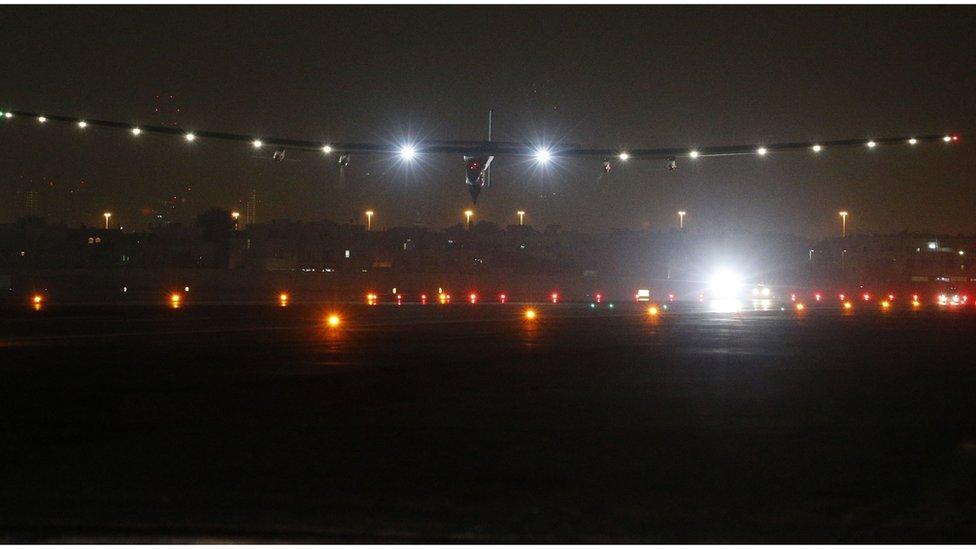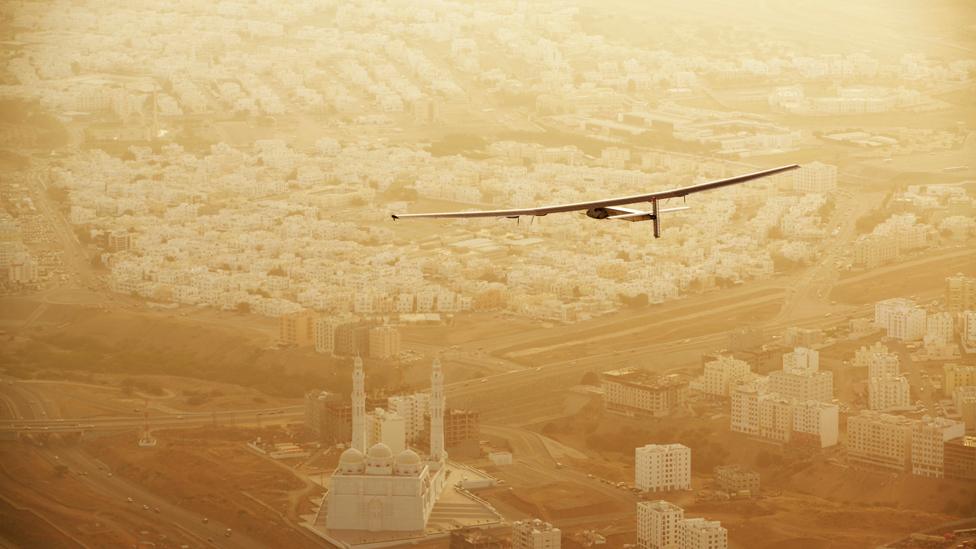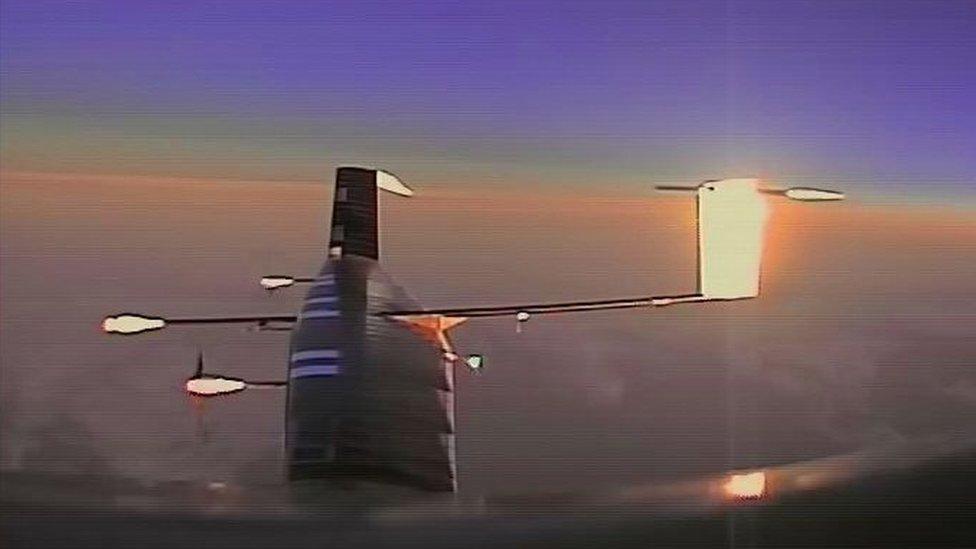Where next for solar-powered flight?
- Published

There was something mesmerising about watching Solar Impulse come in to land, particularly at night.
Moving slowly but deliberately, its LEDs lighting the way - the plane did look very different to anything we would recognise at an airport.
This Swiss project set out to achieve a number of goals.
The obvious one was rooted in adventure - to do something no-one had done before and to fly around the globe on no fuel.
It's certainly achieved that, and, in fact, set no fewer than 19 aviation records in the process.
The most remarkable of these was the five-day, five-night crossing of the Western Pacific in June/July last year.
That was the longest (time duration) solo flight in history by any sort of plane.
And related to all this was the objective of proving, of demonstrating, that the moment for clean technologies is here and now.

Does that mean we are about to board solar-powered planes to go on holiday? No, it does not.
As we saw with Solar Impulse, the capability currently is to carry only one person - the pilot. This is not a mass transport solution.
Solar Impulse is also too slow - you can't get to that urgent business meeting on time, especially if the weather conditions are not right.
And it can be very bumpy with that big wingspan and light-weight design.
On this final flight into Abu Dhabi, the pilot Bertrand Piccard had to contend with some terrible turbulence over the Saudi desert as rising thermals buffeted Solar Impulse.
You or I would have reached for the sick bag on more than one occasion.
But while the Airbus A380 and its ilk continue to be our foreseeable future, take a look in the back of the brochure and you will see where some of this technology is heading.
Europe's biggest aerospace company, for example, makes a solar-powered drone called Zephyr, external.

Solar-powered drones like Zephyr fly above 65,000ft, above the high-speed jet streams
So, this is a robotic plane; there's no human aboard. And it will fly high above the jet streams, above 60,000ft, and circle continuously.
This British aircraft is sometimes called an "eternal plane" or a "pseudo satellite".
It can stay up for months. The MoD has just bought a couple to do reconnaissance and telecommunications for UK forces abroad.
Facebook also thinks solar-powered drones have huge potential.
The social media giant believes these types of aircraft are a solution to taking broadband connectivity to those places in the world that don't currently have it. Facebook is investing heavily.
As for passengers - the vision that looks most probable in the near-term is small electric planes.
These would be fully charged on take-off, and make short hops, perhaps between nearby cities where keeping noise to a minimum would be attractive.
Their power systems might even be supplemented by solar.

Aerospace companies are prototyping short-hop electric planes
The message Bertrand Piccard has repeated throughout his global tour however has been to "think big". To not sit in an office, but to try something difficult.
It's the same attitude that enabled him to make the first non-stop circumnavigation of the globe in a balloon in 1999.
It's the same attitude that drove his father to make the first trip to the bottom of the Mariana Trench, the deepest place in the ocean. And for his grandfather to dare to ride the first balloon into the stratosphere.
Bertrand Piccard bet me last week that in 10 years we would see solar power playing a role in moving tens of people by air on short journeys. Can we rise to that challenge?